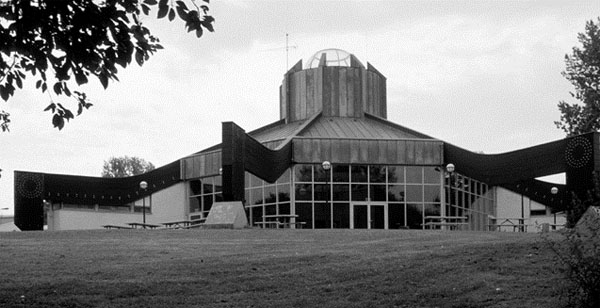From the end of World War II in 1945 until the end of the Cold War in 1991, Army Engineers played a key role in providing the facilities for arming, supplying, training, and housing American soldiers and airmen and their families in Europe. These facilities supported the large American and NATO forces stationed for almost fifty years on the front lines of the conflict between East and West, ready to confront a Soviet invasion.
After the defeat of Germany, the relatively small American force in Europe was preoccupied with the administration and reconstruction of their former foe. But as the confrontation between the Soviet Union, our former ally, intensified with the Berlin blockade and the outbreak of the Korean War, American leaders grew fearful that the next target of international communism was Western Europe, which contained our most important democratic allies and a rapidly rebuilding capitalist economy. In response to this fear, the United States deployed large forces to West Germany. This large and rapid buildup required a tremendous amount of construction, carried out by Army Engineers and largely financed by occupied Germany.
As the threat of imminent invasion receded in the late 1950s, U.S. Army Engineers continued to build and maintain facilities that supported American and NATO combat power and housed and supported U.S. forces and their families, now permanently stationed in West Germany. During the era of the Vietnam War, American troops and facilities were neglected forcing Engineers to marshal their slender resources augmented by host nation contributions to keep American forces ready for war and take care of Army and Air Force personnel and their families.
At the end of the Vietnam War, the United States adopted a volunteer Army, but declining military expenditures made it difficult to keep the American forces combat ready and maintain the quality of life for soldiers and their families. From the end of World War II until the end of the war in Southeast Asia, the Army component command in Germany, the U.S. Army, Europe (USAREUR), managed military construction in the theater with its own Engineer organizations. Adopting a variety of organizational arrangements, including an engineer command from 1966 to 1974, USAREUR and its engineers attempted to find the most efficient and effective means to use the scarce resources available for construction and maintenance.
With pressures on USAREUR in the mid-1970s to reduce the size of its headquarters and budget, the command asked the Corps of Engineers to take responsibility for military construction in the theater. For the next 17 years the Europe Division of the Corps executed the Army and Air Force construction programs in Europe and supported the NATO construction program.
Executing the construction program was a complex affair because American forces in West Germany had to use German construction offices and procedures to build facilities. Mastering these complicated and delicate international arrangements, EUD accomplished a large and complex construction program, especially during the 1980s. This massive program to improve American weaponry and conditions for troops and their families, supported by the commitment of huge resources to building the facilities required, was one factor in shaking the resolve of Soviet leaders and exposing the hidden weaknesses of the Soviet military and political systems.
As the Soviet system, like the Berlin Wall, collapsed in the late 1980s and early 1990s, it appeared that American and allied forces in Europe had accomplished their mission without war. American expenditures on construction in Europe declined sharply. In response the Corps of Engineers drastically reduced the size of EUD and reconstituted it as the Europe District. Engineers and USACE remained in Europe, still proud of their contribution to defending Western Europe and ending the Cold War.
A book describes and analyzes the important Engineer effort in Europe. The Office of History, Headquarters, U.S. Army Corps of Engineers, and the U.S. Army Center of Military History jointly published this book, Building for Peace: U.S. Army Engineers in Europe, 1945-1991 written by Robert P. Grathwol and Donita Moorhus. The book became the first volume in a Center of Military History series, U.S. Army in the Cold War.
Youth activity centers in Germany included this facility in Wiesbaden.

Ammunition storage facility, Heilbronn, West Germany (left);
and child care facility in Bad Kreuznach, West Germany (right).
* * *
January 2007